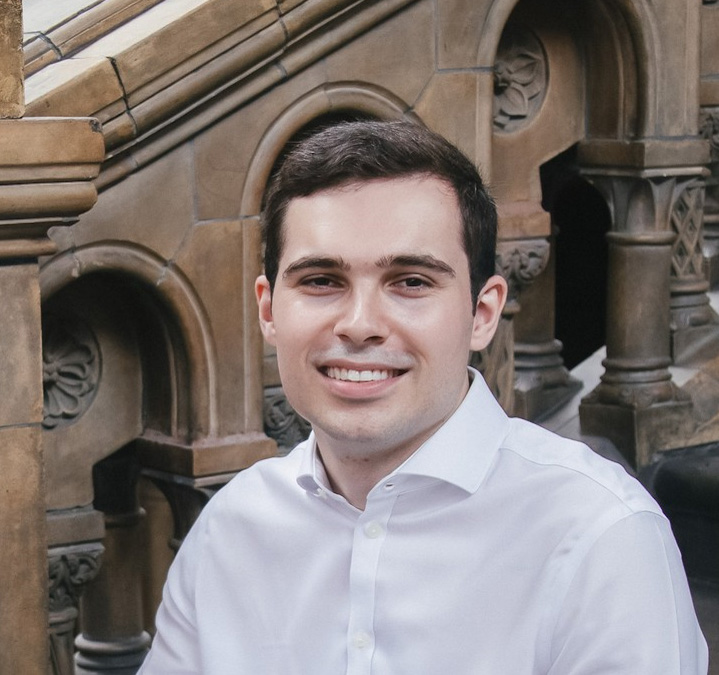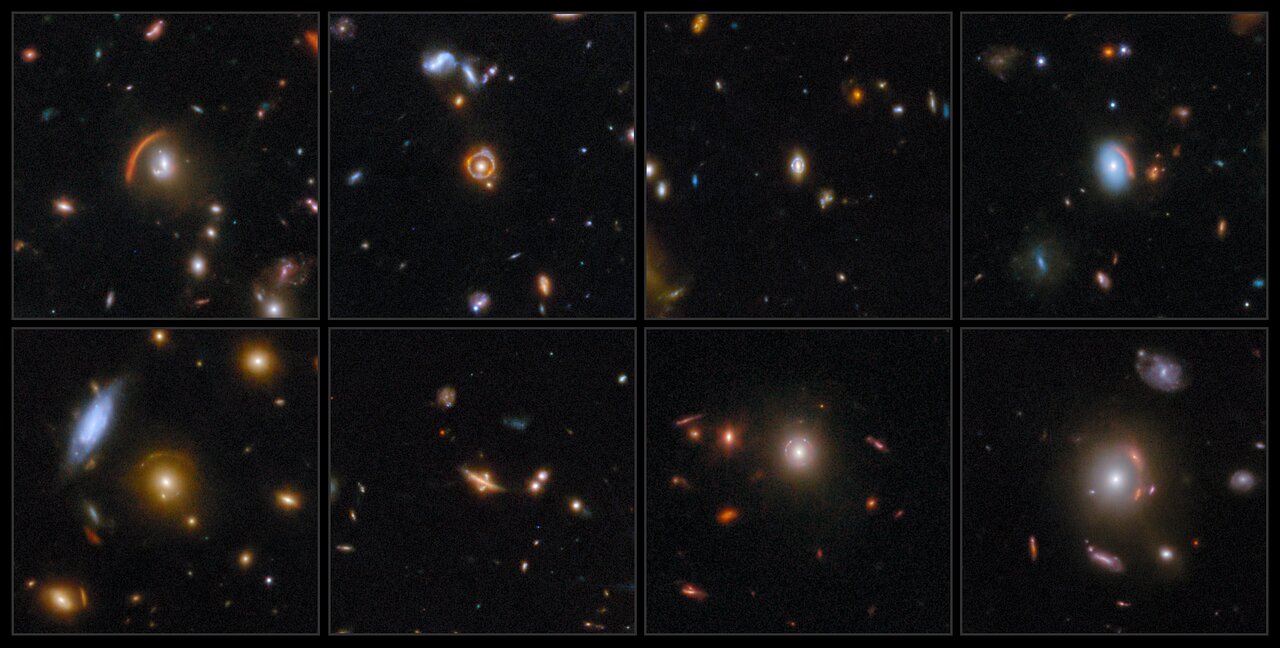Sitemap
A list of all the posts and pages found on the site. For you robots out there is an XML version available for digesting as well.
Pages
Posts
press
Durham astrophysicists’ key contributions to cosmic discoveries
Published:
Recommended citation: "These observations are tremendously exciting: they demonstrate the capabilities of this precision instrument, while already pushing the cutting-edge in astrophysics. Among the results, it is astonishing that Euclid has already discovered 500 gravitational lens candidates substantially adding to the total of approximately 1,000 previously known lensed galaxies, which took over 40 years to discover! At this rate, Euclid is expected to observe 200,000 such objects over six years of the survey. These observations, together with the two billion galaxies Euclid will image, will help us understand how dark matter is distributed in the Universe and may allow us to uncover its nature. " - MvWK https://www.durham.ac.uk/news-events/latest-news/2025/03/euclid-q1-data-release/
Final findings from Kilo-Degree survey confirm cosmology model
Published:
Recommended citation: "The Kilo-Degree Survey has said its last word on one of the most polarising tensions in cosmology! The final KiDS results reconcile early- and late-Universe measurements of the distribution of dark matter in the Universe. As we enter the golden era of gravitational lensing with surveys such as Euclid, this analysis drives the state-of-the-art of weak lensing cosmology and teaches us important lessons for the future." - MvWK https://www.durham.ac.uk/news-events/latest-news/2025/03/final-findings-from-kilo-degree-survey-confirm-cosmology-model/
Webb brings cosmic lenses into focus
Published:
Recommended citation: "This ESA/Webb Picture of the Month shows eight stunning examples of gravitational lensing. Gravitational lensing, which was first predicted by Einstein, occurs because massive objects like galaxies and clusters of galaxies dramatically warp the fabric of spacetime." https://esawebb.org/images/potm2509a/
publications
Dark energy and equivalence principle constraints from astrophysical tests of the stability of the fine-structure constant
Published in Journal of Cosmology and Astroparticle Physics, 2015
Recommended citation: Martins, C. J. A. P., Pinho, A. M. M., Alves, R. F. C., Pino, M., Rocha, C. I. S. A., & von Wietersheim, M. (2015). Dark energy and equivalence principle constraints from astrophysical tests of the stability of the fine-structure constant. Journal of Cosmology and Astroparticle Physics, 2015(08), 047. https://iopscience.iop.org/article/10.1088/1475-7516/2015/08/047
KiDS-1000 methodology: Modelling and inference for joint weak gravitational lensing and spectroscopic galaxy clustering analysis
Published in Astronomy & Astrophysics, 2020
Recommended citation: Joachimi, B., Lin, C. A., Asgari, M., Tröster, T., Heymans, C., Hildebrandt, H., ... & Zuntz, J. (2021). KiDS-1000 methodology: Modelling and inference for joint weak gravitational lensing and spectroscopic galaxy clustering analysis. Astronomy & Astrophysics, 646, A129. https://doi.org/10.1051/0004-6361/202038831
Magnification bias in galaxy surveys with complex sample selection functions
Published in Monthly Notices of the Royal Astronomical Society, 2021
Recommended citation: von Wietersheim-Kramsta, M., Joachimi, B., van den Busch, J. L., Heymans, C., Hildebrandt, H., Asgari, M., ... & Wright, A. H. (2021). Magnification bias in galaxy surveys with complex sample selection functions. Monthly Notices of the Royal Astronomical Society, 504(1), 1452-1465. https://doi.org/10.1093/mnras/stab1000
KiDS-1000: Constraints on the intrinsic alignment of luminous red galaxies
Published in Astronomy & Astrophysics, 2021
Recommended citation: Fortuna, M. C., Hoekstra, H., Johnston, H., Vakili, M., Kannawadi, A., Georgiou, C., ... & Von Wietersheim-Kramsta, M. (2021). KiDS-1000: Constraints on the intrinsic alignment of luminous red galaxies. Astronomy & Astrophysics, 654, A76. https://doi.org/10.1051/0004-6361/202140706
GLASS: Generator for Large Scale Structure
Published in The Open Journal of Astrophysics, 2023
Recommended citation: Tessore, N., Loureiro, A., Joachimi, B., von Wietersheim-Kramsta, M., & Jeffrey, N. (2023). GLASS: Generator for Large Scale Structure. The Open Journal of Astrophysics, 6, 11. https://doi.org/10.21105/astro.2302.01942
A simulation-based inference pipeline for cosmic shear with the Kilo-Degree Survey
Published in Monthly Notices of the Royal Astronomical Society, 2023
Recommended citation: Lin, K., von Wietersheim-Kramsta, M., Joachimi, B., & Feeney, S. (2023). A simulation-based inference pipeline for cosmic shear with the Kilo-Degree Survey. Monthly Notices of the Royal Astronomical Society, 524(4), 6167-6180. https://doi.org/10.1093/mnras/stad2262
KiDS-SBI: Simulation-Based Inference Analysis of KiDS-1000 Cosmic Shear
Published in Astronomy & Astrophysics, 2024
Recommended citation: von Wietersheim-Kramsta, M., Lin, K., Tessore, N., Joachimi, B., Loureiro, A., Reischke, R., & Wright, A. H. (2025). KiDS-SBI: Simulation-Based Inference Analysis of KiDS-1000 Cosmic Shear. Astronomy & Astrophysics, 694, A223. https://doi.org/10.1051/0004-6361/202450487
Euclid. I. Overview of the Euclid mission
Published in Astronomy & Astrophysics, 2024
Recommended citation: Mellier, Y., Barroso, J. A., Achúcarro, A., Adamek, J., Adam, R., Addison, G. E., ... & Bruton, S. (2024). Euclid. I. Overview of the Euclid mission. Astronomy & Astrophysics, 697, A1. https://doi.org/10.1051/0004-6361/202450810
6x2pt: Forecasting gains from joint weak lensing and galaxy clustering analyses with spectroscopic-photometric galaxy cross-correlations
Published in Astronomy & Astrophysics, 2024
Recommended citation: Johnston, H., Chisari, N. E., Joudaki, S., Reischke, R., Stölzner, B., Loureiro, A., ... & Zhang, Y. H. (2024). 6x2pt: Forecasting gains from joint weak lensing and galaxy clustering analyses with spectroscopic-photometric galaxy cross-correlations. Astronomy & Astrophysics, 699, A127. https://doi.org/10.1051/0004-6361/202452466
KiDS-Legacy: Covariance validation and the unified OneCovariance framework for projected large-scale structure observables
Published in Astronomy & Astrophysics, 2024
Recommended citation: Reischke, R., Unruh, S., Asgari, M., Dvornik, A., Hildebrandt, H., Joachimi, B., ... & Tröster, T. (2024). KiDS-Legacy: Covariance validation and the unified OneCovariance framework for projected large-scale structure observables. Astronomy & Astrophysics, 699, A124. https://doi.org/10.1051/0004-6361/202452592
KiDS-Legacy: angular galaxy clustering from deep surveys with complex selection effects
Published in Astronomy & Astrophysics, 2024
Recommended citation: Yan, Z., Wright, A. H., Chisari, N. E., Georgiou, C., Joudaki, S., Loureiro, A., ... & Yoon, M. (2024). KiDS-Legacy: angular galaxy clustering from deep surveys with complex selection effects. Astronomy & Astrophysics, 694, A259. https://doi.org/10.1051/0004-6361/202452808
Measuring the Stellar-to-Halo Mass Relation at ∼10^10 Solar masses, using space-based imaging of galaxy-galaxy strong lenses
Published in Submitted to MNRAS, 2025
Recommended citation: Wang, K., Cao, X., Li, R., Nightingale, J. W., He, Q., Amvrosiadis, A., Massey, R., von Wietersheim-Kramsta, M., ... & Ma, X. (2025). Measuring the Stellar-to-Halo Mass Relation at $\sim10^{10} $ Solar masses, using space-based imaging of galaxy-galaxy strong lenses. arXiv preprint arXiv:2501.16139. https://arxiv.org/abs/2501.16139
The COSMOS-Web Lens Survey (COWLS) I: Discovery of >100 high redshift strong lenses in contiguous JWST imaging
Published in Monthly Notices of the Royal Astronomical Society, 2025
Recommended citation: Nightingale, J., Mahler, G., McCleary, J., He, Q., Hogg, N. B., Amvrosiadis, A., ... & Jin, S. (2025). The COSMOS-Web Lens Survey (COWLS) I: Discovery of> 100 high redshift strong lenses in contiguous JWST imaging. MNRAS, 543(1), 203-222. https://doi.org/10.1093/mnras/staf1253
The COSMOS-Web Lens Survey (COWLS) II: depth, resolution, and NIR coverage from JWST reveal 17 spectacular lenses
Published in Monthly Notices of the Royal Astronomical Society: Letters, 2025
Recommended citation: Mahler, G., Nightingale, J. W., Hogg, N. B., Gozaliasl, G., McCleary, J., He, Q., ... & Jin, S. (2025). The COSMOS-Web Lens Survey (COWLS) II: depth, resolution, and NIR coverage from JWST reveal 17 spectacular lenses. MNRAS: Letters, 544(1), L8-L14. https://doi.org/10.1093/mnrasl/slaf088
Euclid Quick Data Release (Q1): VIS processing and data products
Published in Submitted to Astronomy & Astrophysics, 2025
Recommended citation: McCracken, H. J., Benson, K., Dolding, C., Flanet, T., Grenet, C., Herent, O., ... & Martinet, N. (2025). Euclid Quick Data Release (Q1): VIS processing and data products. arXiv preprint arXiv:2503.15303. https://arxiv.org/abs/2503.15303
KiDS-Legacy: Consistency of cosmic shear measurements and joint cosmological constraints with external probes
Published in Submitted to Astronomy & Astrophysics, 2025
Recommended citation: Stölzner, B., Wright, A. H., Asgari, M., Heymans, C., Hildebrandt, H., Hoekstra, H., ... & Zhang, Y. H. (2025). KiDS-Legacy: Consistency of cosmic shear measurements and joint cosmological constraints with external probes. arXiv preprint arXiv:2503.19442. https://arxiv.org/abs/2503.19442
KiDS-Legacy: Cosmological constraints from cosmic shear with the complete Kilo-Degree Survey
Published in Submitted to Astronomy & Astrophysics, 2025
Recommended citation: Wright, A. H., Stölzner, B., Asgari, M., Bilicki, M., Giblin, B., Heymans, C., ... & Zhang, Y. H. (2025). KiDS-Legacy: Cosmological constraints from cosmic shear with the complete Kilo-Degree Survey. arXiv preprint arXiv:2503.19441. https://arxiv.org/abs/2503.19441
KiDS-Legacy: Redshift distributions and their calibration
Published in Submitted to Astronomy & Astrophysics, 2025
Recommended citation: Wright, A. H., Hildebrandt, H., Busch, J. L. V. D., Bilicki, M., Heymans, C., Joachimi, B., ... & Zhang, Y. H. (2025). KiDS-Legacy: Redshift distributions and their calibration. arXiv preprint arXiv:2503.19440. https://arxiv.org/abs/2503.19440
The “Little Dark Dot”: Evidence for Self-Interacting Dark Matter in the Strong Lens SDSSJ0946+1006?
Published in Submitted to MNRAS, 2025
Recommended citation: Li, S., Li, R., Wang, K., Jia, Z., Cao, X., Frenk, C. S., ... & Ma, X. (2025). The" Little Dark Dot": Evidence for Self-Interacting Dark Matter in the Strong Lens SDSSJ0946+ 1006?. arXiv preprint arXiv:2504.11800. https://doi.org/10.48550/arXiv.2504.11800
Probing Dark Matter Substructures with Free-Form Modelling: A Case Study of the `Jackpot’ Strong Lens
Published in Submitted to MNRAS, 2025
Recommended citation: Cao, Xiaoyue, Ran Li, James W. Nightingale, Richard Massey, Qiuhan He, Aristeidis Amvrosiadis, Andrew Robertson et al. "Probing Dark Matter Substructures with Free-Form Modelling: A Case Study of the Jackpot Strong Lens." arXiv preprint arXiv:2504.19177 (2025). https://doi.org/10.48550/arXiv.2504.19177
Not so dark, not so dense: an alternative explanation for the lensing subhalo in SDSSJ0946+1006
Published in The Astrophysical Journal Letters, 2025
Recommended citation: He, Q., Robertson, A., Nightingale, J. W., Amvrosiadis, A., Cole, S., Frenk, C. S., ... & von Wietersheim-Kramsta, M. (2025). Not so dark, not so dense: an alternative explanation for the lensing subhalo in SDSSJ0946+ 1006. ApJL, 991, L53. https://doi.org/10.3847/2041-8213/ae072d
Radiation damage to the Hubble Space Telescope during two Solar cycles, and correction of Charge Transfer Inefficiency
Published in Submitted to MNRAS, 2025
Recommended citation: Massey, R., Kegerreis, J. A., Barrios, J. P. L. G., Nightingale, J. W., Hayes, R. G., Lagattuta, D., ... & von Wietersheim-Kramsta, M. (2025). Radiation damage to the Hubble Space Telescope during two Solar cycles, and correction of Charge Transfer Inefficiency. arXiv preprint arXiv:2509.05057. https://doi.org/10.48550/arXiv.2509.05057
Matter power spectrum reconstruction with KiDS-Legacy: Improved internal ΛCDM consistency and preference for strong baryonic feedback
Published in Submitted to A&A, 2025
Recommended citation: Broxterman, J. C., Simon, P., Porth, L., Kuijken, K., Wright, A. H., Asgari, M., ... & von Wietersheim-Kramsta, M. (2025). Matter power spectrum reconstruction with KiDS-Legacy: Improved internal $\Lambda $ CDM consistency and preference for strong baryonic feedback. arXiv preprint arXiv:2509.08365. https://doi.org/10.48550/arXiv.2509.08365
talks
Estimating the magnification bias for galaxy surveys with complex sample selection functions
Published:
Invited talk at the Institute for Astronomy’s “Lensing Lunch” about “Estimating the magnification bias for galaxy surveys with complex sample selection functions”.
Magnification bias in galaxy surveys with complex sample selection functions
Published:
Remote talk during the Kilo-Degree Survey’s consortium meeting hosted by the German Centre for Cosmological Lensing. The talk was about the “Magnification bias in galaxy surveys with complex sample selection functions”.
Dimensionality reduction wtih Singular Value Decomposition
Published:
Physics-Astro Data (PAD) roundtable seminar on dimensionality reduction (see notes).
Towards a simulation-based analysis of KiDS-1000 weak gravitational lensing
Published:
Conference talk at the LFI in Paris conference at the ENS titled “Towards a simulation-based analysis of KiDS-1000 weak gravitational lensing”.
Simulation-based inference of KiDS-1000 cosmic shear
Published:
Conference talk at the Kilo-Degree Survey consortium meeting at the NCNR/NCBJ titled “Simulation-based inference of KiDS-1000 cosmic shear”.
KiDS-Legacy covariance testing & SBI of KiDS-1000 cosmic shear
Published:
Conference talk at the Kilo-Degree Survey consortium meeting at the University of Hull.
Weak lensing forward-simulations & simulation-based inference (SBI)
Published:
Invited talk at the Centre for Extragalactic Astronomy.
A not so normal beverage of choice seminar
Published:
Special conference “beverage of choice” seminar of the Kilo-Degree Survey’s consortium meeting at the German Centre for Cosmological Lensing titled “A not so “normal” beverage of choice seminar”.
Effects of angular anisotropies on the cosmic shear covariance
Published:
Remote talk hosted by the Euclid Consortium’s Inter-Section Taskforce: Non-Linear titled “Effects of angular anisotropies on the cosmic shear covariance”.
Simulation-based inference (SBI)
Published:
Lensing lunch seminar at the Centre for Extragalactic Astronomy.
Simulation-Based Inference & Variable Depth: Lessons from the Kilo-Degree Survey
Published:
Conference talk at the Euclid UK meeting titled “Simulation-Based Inference & Variable Depth: Lessons from the Kilo-Degree Survey”.
The effect of variable depth on cosmic shear measurements
Published:
Remote conference talk at the Euclid Weak Lensing meeting at the University of Innsbruck titled “The effect of variable depth on cosmic shear measurements”.
Simulation-based inference of KiDS-1000 cosmic shear
Published:
Invited talk at the Imperial Centre for Inference and Cosmology (ICIC) titled “Simulation-based inference of KiDS-1000 cosmic shear”.
Simulation-based inference of KiDS-1000 cosmic shear
Published:
Invited talk at the Institute for Astronomy titled “Simulation-based inference of KiDS-1000 cosmic shear”.
Simulation-Based Inference: But what is my model even doing?
Published:
Conference talk at the SBI for Galaxy Evolution conference at the University of Bristol titled “Simulation-Based Inference: But what is my model even doing?”. The talk gives general recommendations for analysis choices in forward modelling in the context of simulation-based inference or likelihood-free inference.
Poster: Simulation-based inference analysis of KiDS-1000 cosmic shear
Published:
Poster presented at the “Challenging the standard cosmological model” scientific discussion meeting at the Royal Society titled “Simulation-based inference analysis of KiDS-1000 cosmic shear”.
KiDS-SBI: Simulation-based inference analysis of KiDS-1000 cosmic shear
Published:
Conference talk at the UK Cosmology Meeting/Ruth Fest at the King’s College London about “KiDS-SBI: Simulation-based inference analysis of KiDS-1000 cosmic shear”.
KiDS-SBI: Simulation-based inference analysis of KiDS-1000 cosmic shear
Published:
Conference talk at the 4th Statistical Challenges in the 21st Century Cosmology conference about “KiDS-SBI: Simulation-based inference analysis of KiDS-1000 cosmic shear”.
KiDS-SBI: Simulation-based inference analysis of KiDS-1000 cosmic shear
Published:
Contributed talk at the Euclid Consortium Meeting at the Sapienza Università di Roma during the “Machine Learning in Euclid” splinter session about “KiDS-SBI: Simulation-based inference analysis of KiDS-1000 cosmic shear”.
KiDS-SBI: Simulation-based inference analysis of KiDS-1000 cosmic shear
Published:
Invited seminar at the Queen Mary University of London titled “KiDS-SBI: Simulation-based inference analysis of KiDS-1000 cosmic shear”.
KiDS-SBI: Simulation-based inference analysis of KiDS-1000 cosmic shear
Published:
Conference talk at the CosmoVerse conference at the Jagiellonian University in Krakow titled “KiDS-SBI: Simulation-based inference analysis of KiDS-1000 cosmic shear”.
Charge Transfer Inefficiency Calibration
Published:
Conference talk as part of the Euclid OU-VIS meeting at the Institut d’Astrophysique de Paris, Sorbonne Université titled “Charge Transfer Inefficiency Calibration”.
Simulation-based inference analysis of KiDS-1000 cosmic shear
Published:
Invited seminar at the Institut d’Astrophysique de Paris, Sorbonne Université titled “Simulation-based inference analysis of KiDS-1000 cosmic shear”.
From Cosmic Shear to Subhalo Detection: Leveraging Simulation-Based Inference for Precision Cosmology
Published:
Friday Lunchtime Astrophysics Talks (FLAT) at the Institute for Computational Cosmology (ICC) and the Centre for Extragalactic Astronomy at Durham University titled “From Cosmic Shear to Subhalo Detection: Leveraging Simulation-Based Inference for Precision Cosmology”.
Leveraging Simulation-Based Inference for Precision Cosmology
Published:
Short conference talk at DEX XXI, the 21st Decades of EXtragalactic Workshops hosted at Newcastle University, titled “Leveraging Simulation-Based Inference for Precision Cosmology”.
Forward-modelling the galaxy-halo connection
Published:
Short talk at the Forward Modelling and Simulation-Based Inference Splinter of the ESLAB/Euclid Consortium Meeting 2025 hosted in Leiden, titled “Forward-modelling the galaxy-halo connection”.
Converting pixels to cosmology: an overview of non-cosmological effects and their impact on weak lensing observables
Published:
Flash talk at the EC-specific plenary session of the ESLAB/Euclid Consortium Meeting 2025 hosted in Leiden, titled “Converting pixels to cosmology: an overview of non-cosmological effects and their impact on weak lensing observables”.
Simulation-Based Inference of Dark Matter Subhaloes: Forward modelling galaxy-scale strong lenses
Published:
Contributed talk at the Dark Matter under the Gravitational Lens conference hosted by the University of Hong Kong, titled “Simulation-Based Inference of Dark Matter Subhaloes: Forward modelling galaxy-scale strong lenses”.
L2 at Solar Maximum: Radiation Damage in the Euclid Space Telescope
Published:
Contributed talk at the 8th Radiation Damage Workshop hosted by the Centre for Electronic Imaging (CEI) at the Open University, titled “L2 at Solar Maximum: Radiation Damage in the Euclid Space Telescope”.
From Cosmic Shear to Subhalo Detection: Leveraging Simulation-Based Inference for Precision Cosmology
Published:
Invited talk at the Max Planck Institute for Astrophysics, titled “From Cosmic Shear to Subhalo Detection: Leveraging Simulation-Based Inference for Precision Cosmology”.
Simulation-Based Inference: An Overview for Applications in Astrophysics & Cosmology
Published:
Invited review of the field of simulation-based inference for the Simulation-Based Inference for Galaxy Evolution workshop at the University of Bristol, titled “Simulation-Based Inference: An Overview for Applications in Astrophysics & Cosmology”.
Forward-modelling galaxy surveys: A forward model for non-local stochastic galaxy bias
Published:
Conbtributed talk for the Simulation-Based Inference for Galaxy Evolution workshop at the University of Bristol, titled “Forward-modelling galaxy surveys: A forward model for non-local stochastic galaxy bias”.
Subhalo Detection with Simulation-Based Inference from Galaxy-Scale Strong Lenses
Published:
Conbtributed talk for the Valencia Workshop on the Small-Scale Structure of the Universe and Self-Interacting Dark Matter at the IFIC - CSIC and Universitat de València, titled “Subhalo Detection with Simulation-Based Inference from Galaxy-Scale Strong Lenses”.
Poster: Modelling the galaxy-halo connection from the dark matter density alone
Published:
Conbtributed poster for the “A multi-scale and multi-tracer view of the cosmic web” session at the National Astronomy Meeting (NAM) 2025 at Durham University, titled “Modelling the galaxy-halo connection from the dark matter density alone”.
Simulation-Based Inference in Practice: Forward Modelling, Density Estimation, and Testing
Published:
Seminar on simulation-based inference and its practical considerations for the AstroStatistics and Research-Oriented Data Analysis (ASTRODAT) workshop at Durham University, titled “Simulation-Based Inference in Practice: Forward Modelling, Density Estimation, and Testing”.
Galaxy Survey Cosmology Beyond Two Points: Propagating Systematics with Simulation-Based Inference
Published:
Conbtributed talk for the Beyond-two-point Statistics Meet Survey Systematics at the Kavli IPMU, titled “Galaxy Survey Cosmology Beyond Two Points: Propagating Systematics with Simulation-Based Inference”.
Practicalities of Simulation-Based Inference in Cosmology and Astrophysics
Published:
Invited talk for the Machine Learning Workshop at the Oskar Klein Centre at Stockholm University, titled “Practicalities of Simulation-Based Inference in Cosmology and Astrophysics”.
Cosmology with SBI: Forward Modelling Weak and Strong Lensing Observables
Published:
Invited talk for the Cosmology and Gravitation seminar at the Oskar Klein Centre at Stockholm University, titled “Cosmology with SBI: Forward Modelling Weak and Strong Lensing Observables”.
teaching
Marking for the “Physical Cosmology” course
Marking, University College London, Department of Physics and Astronomy, 2019
 Marking of weekly problems sheets on cosmology as part of the 15-credit 3rd-year undergraduate course “Physical Cosmology” (PHAS0037). The course involves the evolution of the Universe, structure formation, galactic physics and observational probes of cosmology.
Marking of weekly problems sheets on cosmology as part of the 15-credit 3rd-year undergraduate course “Physical Cosmology” (PHAS0037). The course involves the evolution of the Universe, structure formation, galactic physics and observational probes of cosmology.
Tutorials for the “Mathematical Methods I” course
Tutorial, University College London, Department of Physics and Astronomy, 2020
 Convening and demonstrating of weekly tutorials as part of the 15-credit 1st-year undergraduate course “Mathematical Methods I” (PHAS0002). The course involves calculus, differential equations, vectors and complex analysis.
Convening and demonstrating of weekly tutorials as part of the 15-credit 1st-year undergraduate course “Mathematical Methods I” (PHAS0002). The course involves calculus, differential equations, vectors and complex analysis.
Tutorials for the “Atoms, Stars and the Universe” course
Tutorial, University College London, Department of Physics and Astronomy, 2020
 Convening and demonstrating of weekly tutorials as part of the 15-credit 1st-year undergraduate course “Atoms, Stars and the Universe” (PHAS0004). The course involves introductions to quantum mechanics, astrophysics and cosmology.
Convening and demonstrating of weekly tutorials as part of the 15-credit 1st-year undergraduate course “Atoms, Stars and the Universe” (PHAS0004). The course involves introductions to quantum mechanics, astrophysics and cosmology.
Workshops for the “Theoretical Physics 2” course
Tutorial, Durham University, Department of Physics, 2024
 Convening and demonstrating of two weekly workshops as part of the 2nd-year undergraduate course “Theoretical Physics 2” (PHYS2631) over two terms. The course covers calculus of varations, Lagrangian and Hamiltonian mechanics, symmetry principles and advanced quantum theory. Each workshop involves demonstrating a problem set to approx. 40 students, and present the answers to the questions.
Convening and demonstrating of two weekly workshops as part of the 2nd-year undergraduate course “Theoretical Physics 2” (PHYS2631) over two terms. The course covers calculus of varations, Lagrangian and Hamiltonian mechanics, symmetry principles and advanced quantum theory. Each workshop involves demonstrating a problem set to approx. 40 students, and present the answers to the questions.
Lecture for the “Theoretical Physics 2” course
Lecturing, Durham University, Department of Physics, 2024
 Guest lecture as part of the 2nd-year undergraduate course “Theoretical Physics 2” (PHYS2631). The course covers calculus of varations, Lagrangian and Hamiltonian mechanics, symmetry principles and advanced quantum theory.
Guest lecture as part of the 2nd-year undergraduate course “Theoretical Physics 2” (PHYS2631). The course covers calculus of varations, Lagrangian and Hamiltonian mechanics, symmetry principles and advanced quantum theory.
Contribution to lecture for the “Stars and Galaxies” course
Lecturing, Durham University, Department of Physics, 2024
 Guest contribution to lecture on gravitational lensing as part of the 2nd-year undergraduate course “Stars and Galaxies” (PHYS2621). The course covers an introduction to stellar and galactic astrophysics.
Guest contribution to lecture on gravitational lensing as part of the 2nd-year undergraduate course “Stars and Galaxies” (PHYS2621). The course covers an introduction to stellar and galactic astrophysics.


.png)
